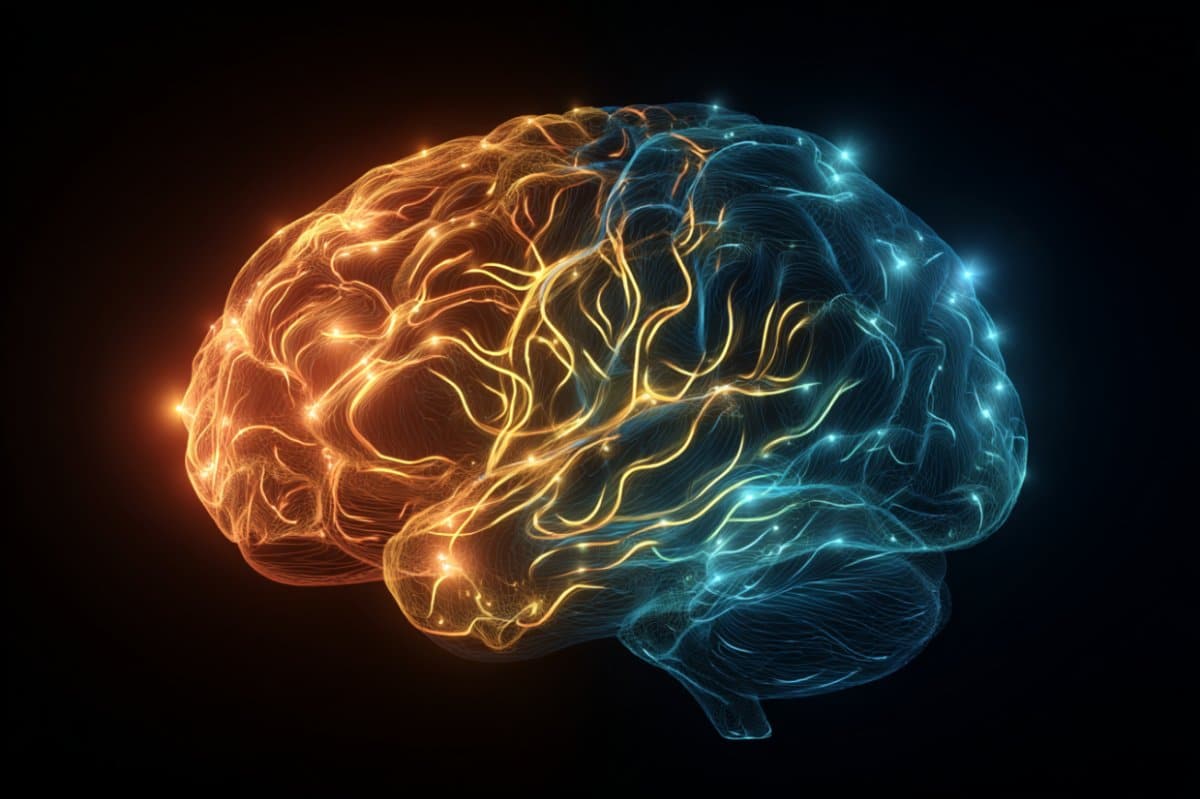Summary: New research reveals how structural brain connectivity shapes psychopathic traits and externalizing behaviors. Using advanced connectome modeling, scientists identified two key networks: one tied to impaired emotional processing, the other to poor attentional control.
These distinct neural pathways explain how psychopathy manifests as both emotional detachment and impulsivity. The findings pave the way for targeted interventions to mitigate harmful behaviors.
Key Takeaways:
- Structural brain networks associated with emotion, reward, and attention are linked to psychopathic traits.
- Two distinct neural pathways may mediate the relationship between psychopathy and externalizing behaviors.
- Insights into brain connectivity open new avenues for targeted interventions and prevention.
Source: Neuroscience News
Psychopathy has long fascinated researchers, clinicians, and the public alike, as a personality constellation characterized by a lack of empathy, manipulativeness, impulsivity, and often, a tendency toward antisocial or criminal behavior.
At its core, psychopathy is not simply a matter of bad choices or poor upbringing — growing evidence suggests it has a biological foundation, shaped by the intricate wiring of the human brain.

Now, a new study offers fresh insights into how structural brain connectivity patterns are linked to psychopathic traits and the externalizing behaviors that often accompany them.
Published using data from the MPI Leipzig Mind-Brain–Body dataset, the research examined 82 young adults, employing advanced connectome-based predictive modeling to pinpoint the structural networks underlying psychopathy.
The findings illuminate not just where in the brain psychopathy may reside, but how its expression can lead to outwardly harmful behaviors.
Importantly, the study identifies two distinct neural pathways that appear to mediate the relationship between psychopathic traits and externalizing actions — opening up potential avenues for targeted interventions.
Psychopathy and the Externalizing Spectrum
Psychopathy occupies a unique place within the externalizing spectrum — a broad category of behavioral problems that includes aggression, substance abuse, impulsivity, and rule-breaking. People high in psychopathic traits often exhibit these behaviors more prominently than their peers, creating serious personal, social, and legal consequences.
Previous studies have already pointed to abnormalities in brain functioning and connectivity in individuals with high psychopathic traits. Functional imaging research, for instance, has identified reduced activity in regions critical for emotion regulation, such as the amygdala and prefrontal cortex.
However, less is known about the structural wiring of the brain in psychopathy — that is, the white matter pathways that physically connect distant brain regions and enable them to communicate effectively.
A Network-Based Approach to Psychopathy
The current study takes a network-level perspective, reflecting a broader trend in neuroscience that views mental disorders not as localized “lesions” but as disruptions in the dynamic interactions between brain regions.
Using structural connectome data derived from diffusion MRI, the researchers constructed a comprehensive map of each participant’s brain connectivity — a so-called connectome.
They then applied a predictive modeling framework, systematically leaving out one participant at a time to validate their findings (a rigorous technique known as leave-one-out cross-validation).
Their analysis revealed two sets of networks associated with psychopathy: one set of connections where greater integrity was positively related to psychopathic traits (the “positive network”) and another set where greater integrity was negatively related to psychopathy (the “negative network”).
The Positive and Negative Networks: A Tale of Two Pathways
The positive network involved structural connections among brain regions implicated in social-affective processing, language comprehension, and reward sensitivity. These regions include areas such as the orbitofrontal cortex, anterior insula, and subcortical reward circuitry — all of which are crucial for interpreting social cues, evaluating rewards and punishments, and making moral decisions.
Higher connectivity in these areas in psychopathic individuals may paradoxically support their superficial charm, manipulativeness, and reward-driven behavior, despite their emotional deficits.
Conversely, the negative network encompassed connections between regions involved in attentional control and modulation, such as the dorsolateral prefrontal cortex and parietal attention systems. Reduced structural connectivity here may underlie the poor impulse control and inability to inhibit inappropriate behaviors that are hallmarks of psychopathy.
Together, these two opposing networks illustrate the complexity of psychopathy as a disorder that combines emotional detachment with impulsive, often destructive behavior.
Two Neural Pathways Linking Psychopathy to Behavior
Crucially, the study didn’t stop at identifying networks — it also investigated how these networks might mediate the relationship between psychopathic traits and externalizing behaviors. Through mediation analyses, the researchers identified two distinct pathways:
- Emotional Processing Pathway: Involving the positive network, this pathway connects psychopathic traits to externalizing behaviors through dysfunctions in social-affective and reward-related processing. Individuals high in psychopathy may fail to feel guilt or empathy and remain highly motivated by immediate rewards, making them more prone to antisocial actions.
- Attention Modulation Pathway: Involving the negative network, this pathway links psychopathy to externalizing behaviors through impaired attentional control. Difficulty shifting attention away from rewarding stimuli or suppressing inappropriate impulses may exacerbate risk-taking and aggressive behavior.
These findings elegantly map onto clinical observations of psychopathy: the chilling emotional coldness coupled with rash, reckless actions.
Implications for Intervention and Future Research
By uncovering the distinct neural pathways that bridge psychopathy and externalizing behavior, this research opens potential new avenues for intervention. Therapies that target attentional control — such as mindfulness training or cognitive remediation — may be particularly helpful for addressing impulsive behaviors.
Meanwhile, interventions that aim to enhance social-affective understanding, such as empathy training or moral reasoning exercises, may help reduce the more callous aspects of psychopathy.
Moreover, these findings highlight the importance of viewing psychopathy as a disorder of network dysfunction rather than a single brain region. This perspective aligns with contemporary models of mental illness that emphasize the brain’s connectivity and systems-level organization.
Future studies will need to explore whether these structural abnormalities are present early in development, perhaps even before behavioral symptoms fully emerge. Longitudinal research could determine whether interventions aimed at strengthening specific networks could mitigate the emergence or severity of psychopathy and its associated behaviors.
A More Nuanced View of Psychopathy
Psychopathy has often been portrayed in starkly negative or sensationalized terms, but findings like these offer a more nuanced view. They remind us that even the most troubling behaviors may have roots in the intricate workings of the brain’s wiring, shaped by genetic and environmental factors.
Understanding these neural underpinnings not only advances science but also holds the potential to inform more compassionate and effective approaches to prevention and treatment.
As we continue to map the brain’s networks and unravel how they give rise to behavior, studies like this one bring us closer to decoding the enigma of psychopathy — and, in turn, to finding ways to help those whose lives are touched by it.
About this psychopathy and neuroscience research news
Author: Neuroscience News Communications
Source: Neuroscience News
Contact: Neuroscience News Communications – Neuroscience News
Image: The image is credited to Neuroscience News
Original Research: Closed access.
“The Role of Structural Brain Networks in Psychopathy and Its Relation to Externalizing Behaviors” by Peiyang Guo et al. European Journal of Neuroscience
Abstract
The Role of Structural Brain Networks in Psychopathy and Its Relation to Externalizing Behaviors
Externalizing behaviors are particularly pronounced in the context of psychopathy.
Recent neurobiological models suggest that psychopathy may be associated with abnormalities in brain network connectivity, which could contribute to its development and its links to externalizing behaviors.
However, the specific structural networks contributing to psychopathy and its relation to externalizing behaviors remain poorly understood.
In this study, we investigated the structural connectivity associated with psychopathy and its relation to externalizing behaviors in 82 young adults from the MPI Leipzig Mind-Brain–Body dataset.
A structural connectome–based prediction model with leave-one-out cross-validation identified both positive and negative networks associated with psychopathy.
Specifically, the positive network involved regions related to social-affective processing, language, and reward systems, while the negative network was associated with regions involved in attention modulation.
Furthermore, mediation analyses revealed two potential neural pathways from psychopathic traits to externalizing behaviors via emotional processing and attention modulation networks.
These findings suggest that alterations in structural connectivity play a significant role in psychopathy and may underlie the externalizing behaviors observed in individuals with the disorder.







